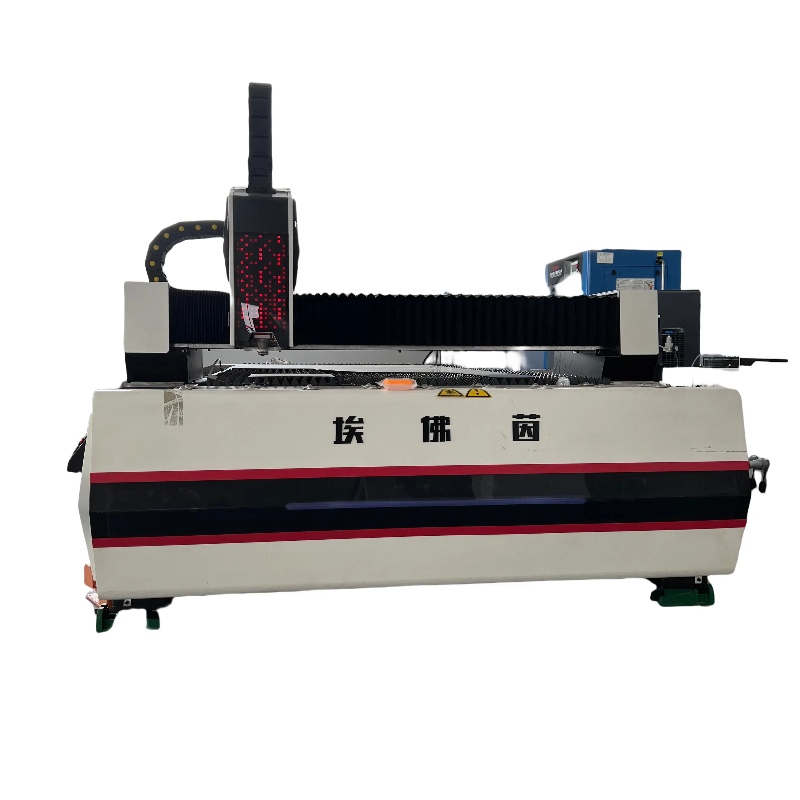How Laser Cutters Work: The Science Behind Precision Cutting
Laser cutting technology has revolutionized the manufacturing industry by providing a precise, efficient, and versatile method for cutting various materials. Whether you're working with metals, plastics, or wood, understanding how laser cutters operate can help you appreciate their capabilities and applications. In this article, we will explore the science behind laser cutting, focusing on the features of AIFOYIN's AFN series open double drive optical fiber laser cutting machine.

What is Laser Cutting?
Laser cutting is a process that uses a high-powered laser beam to cut through materials with precision. The laser is focused onto the material to be cut, melting or vaporizing it along a predetermined path. This method is widely used in various industries, including automotive, aerospace, and manufacturing, due to its ability to produce intricate designs with minimal waste.
Key Components of a Laser Cutter
1. Laser Source: The heart of the laser cutter, which generates the laser beam. Common types include CO2 lasers and fiber lasers.
2. Optical System: This system focuses the laser beam onto the material surface. It typically includes lenses and mirrors that direct and concentrate the beam.
3. Cutting Head: Contains the nozzle through which the laser beam exits and may also incorporate assist gases like oxygen or nitrogen to improve cutting quality.
4. Control System: A computer system that interprets CAD files and controls the movement of the cutting head along the X and Y axes.
5. Worktable: The surface where materials are placed for cutting. Some machines feature a moving table for continuous operation.
How Laser Cutting Works
1. Preparation
Before cutting begins, a design is created using CAD (Computer-Aided Design) software. This design is then converted into a format that the laser cutter can understand, typically G-code.
2. Material Placement
The material to be cut is securely placed on the worktable of the laser cutter. Depending on the machine's design, it may have a fixed or movable table.
3. Laser Activation
Once everything is set up, the operator activates the laser cutter. The laser source generates a focused beam of light that travels through the optical system and exits through the cutting head.
4. Cutting Process
As the focused laser beam hits the material's surface, it generates intense heat that melts or vaporizes the material along the designated path. The cutting head moves according to the programmed design, allowing for intricate cuts and shapes.
- Assist Gases: In many cases, assist gases are used to enhance the cutting process. For example:
- Oxygen: Often used for cutting steel; it reacts with molten metal to create an exothermic reaction that improves cutting speed.
- Nitrogen: Typically used for non-ferrous metals; it helps produce cleaner cuts without oxidation.
5. Post-Cutting Inspection
After cutting is complete, parts may undergo inspection to ensure they meet quality standards. This may involve checking dimensions and surface finishes.
Advantages of Laser Cutting
1. Precision: Laser cutters can achieve extremely tight tolerances (as small as ±0.02 mm), making them ideal for complex designs.
2. Versatility: They can cut a wide range of materials, including metals (steel, aluminum), plastics (acrylic), wood, fabric, and more.
3. Minimal Waste: The narrow kerf (the width of material removed during cutting) means less waste compared to traditional methods.
4. Automation: Many modern laser cutters are equipped with advanced control systems that allow for automated operation and integration with other manufacturing processes.
5. Quality Finish: Laser-cut edges are often smoother than those produced by mechanical cutting methods, reducing or eliminating the need for secondary finishing processes.
AIFOYIN’s AFN Series Laser Cutting Machines
The AFN series open double drive optical fiber laser cutting machine from AIFOYIN exemplifies modern advancements in laser technology:
- Stable Performance: Designed for high efficiency and energy savings.
- Laser Power Options: Available in various power levels (500W-2000W) to suit different applications.
- Working Range: Models like AFN-3015 offer a working range of 3000mm x 1500mm.
- Precision Engineering: With an accuracy of ±0.02 mm and maximum positioning speeds of up to 80 m/min, these machines ensure high-quality cuts.
- Durable Construction: Built with robust materials to withstand rigorous industrial use.
Conclusion
Laser cutting technology has become an indispensable tool in modern manufacturing due to its precision, versatility, and efficiency. Understanding how laser cutters work—from their components to their operational processes—can help businesses make informed decisions about integrating this technology into their production lines.
With advanced models like AIFOYIN’s AFN series offering exceptional performance and reliability, companies can leverage laser cutting to enhance their manufacturing capabilities while maintaining high standards of quality and efficiency. If you're considering investing in a laser cutter or upgrading your existing equipment, AIFOYIN provides innovative solutions tailored to meet your specific needs!
- Art
- Causes
- Crafts
- Dance
- Drinks
- Film
- Fitness
- Food
- Spiele
- Gardening
- Health
- Home
- Literature
- Music
- Networking
- Other
- Party
- Religion
- Shopping
- Sports
- Theater
- Wellness


